In a world of Debian and Ubuntu-based Linux distributions, Fedora has managed to carve out a space for itself with its commitment to delivering the latest open source technologies and serving as a testing ground for newly developed features.
The project maintains several variants to cater to different use cases and preferences. Fedora Workstation provides a polished desktop experience with GNOME, while Fedora KDE offers the Plasma desktop environment.
For server deployments, there's Fedora Server, and for IoT applications, Fedora IoT. Additionally, immutable variants like Fedora Silverblue and Fedora Kinoite provide atomic updates and enhanced reliability for desktop users.
With the next Fedora release on the horizon, let’s explore the exciting new features it brings.
1. Anaconda WebUI for Fedora Spins
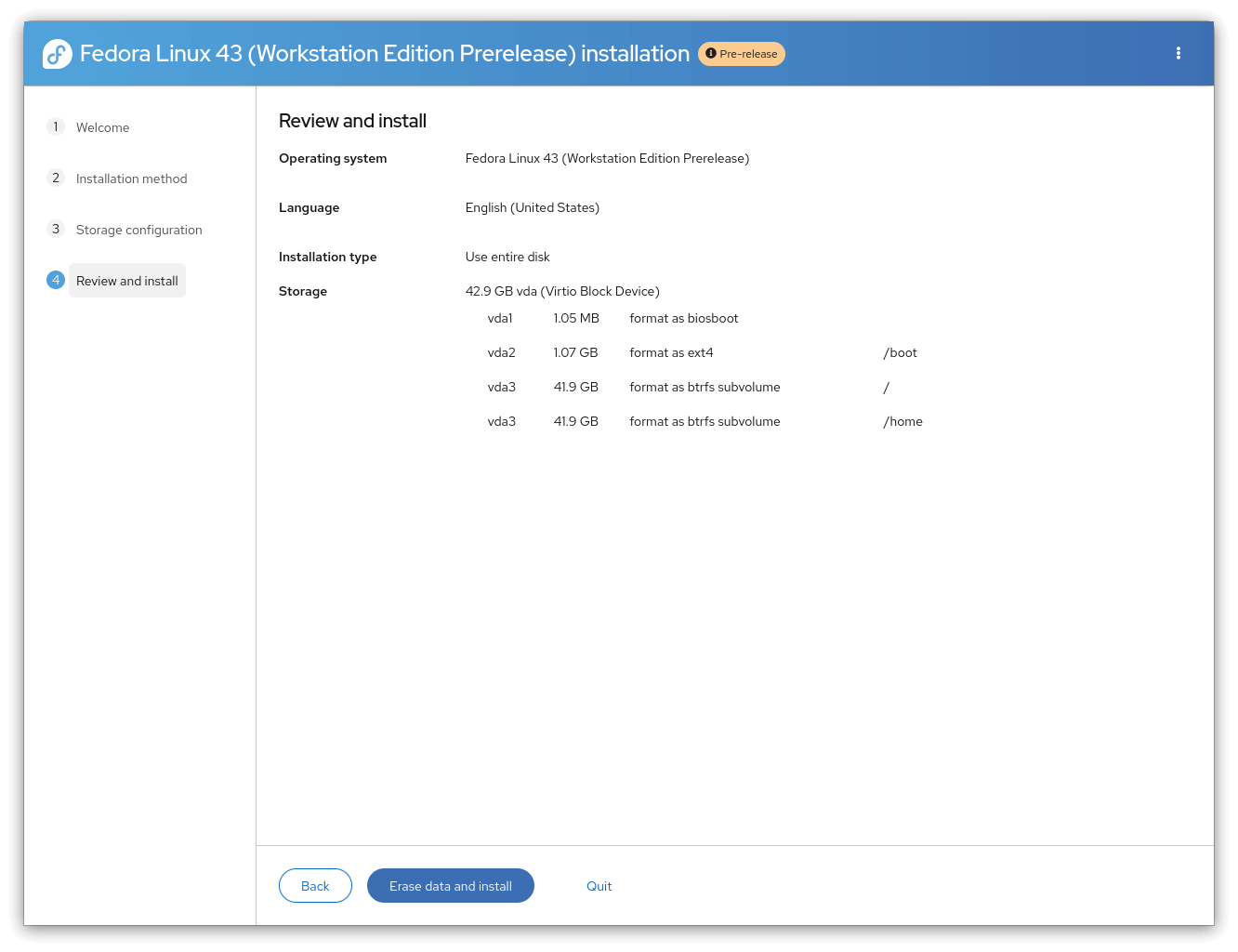
The Anaconda WebUI installer has been in use by Fedora Workstation for a while now, and while it is the default installer for the former, with this release, it is now also the default for Fedora Spins and Editions.
This creates a consistent and modern installation experience across most Fedora desktop variants, though some Spins may have a slower transition to this depending on their development priorities.
Additionally, Fedora 43 removes DNF modularity support from the Anaconda installer. The installer also switches from DNF4 to DNF5 for package management, providing better debugging support and moving toward the deprecation of DNF4.
2. New Default Wallpaper
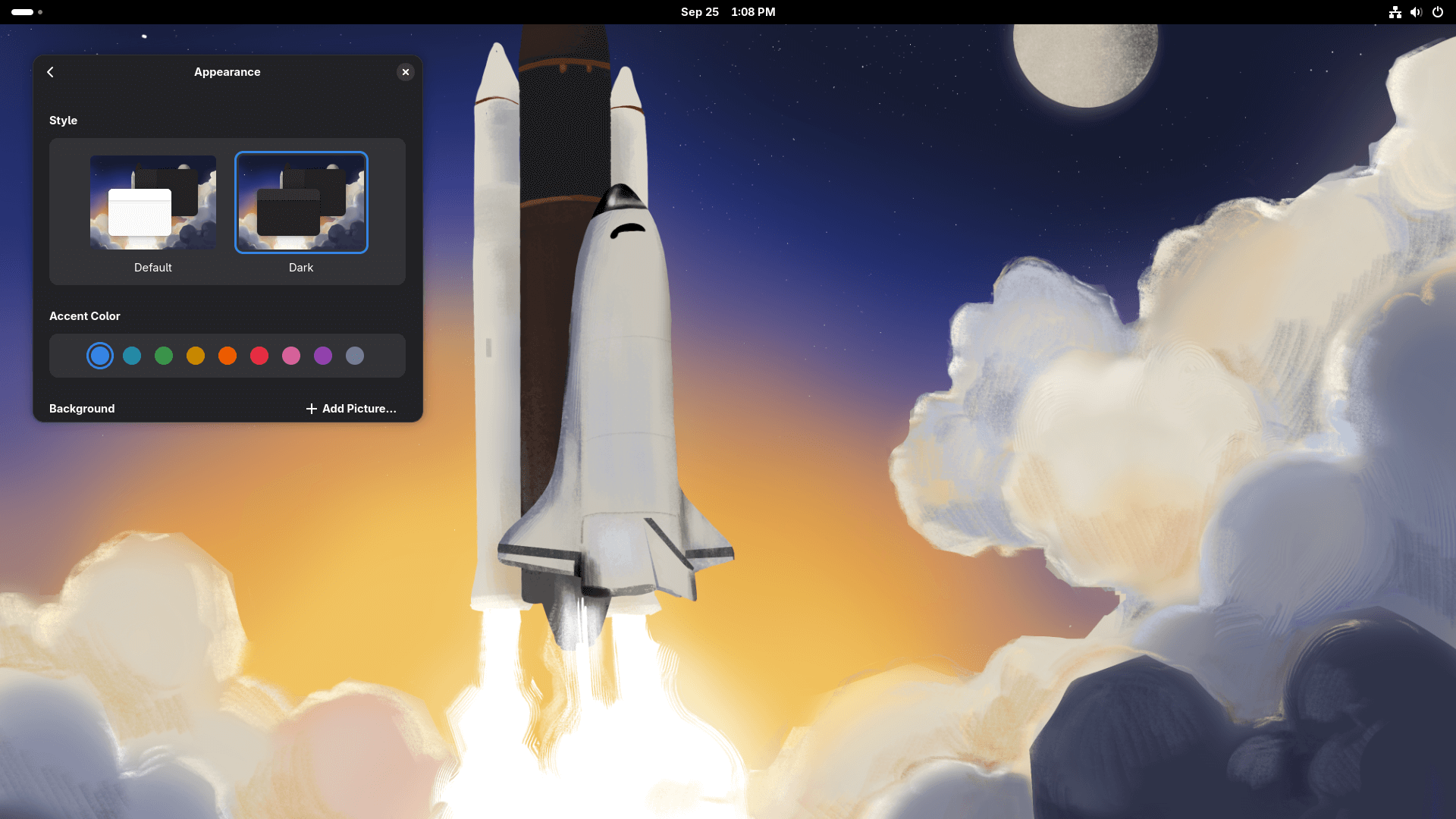
Fedora 43 features a stunning new day and night wallpaper inspired by Sally Ride's legacy. She was the first American woman to go to space on June 18, 1983. The community chose her from candidates whose last names start with "R".
The wallpapers showcase spacecraft, billowing clouds, the moon, stars, and celestial elements from her missions. The design reflects bright, colorful mid-century space art and retro futurism, with this perfectly representing her work in STEM.
3. Wayland-Only GNOME 49 as Desktop
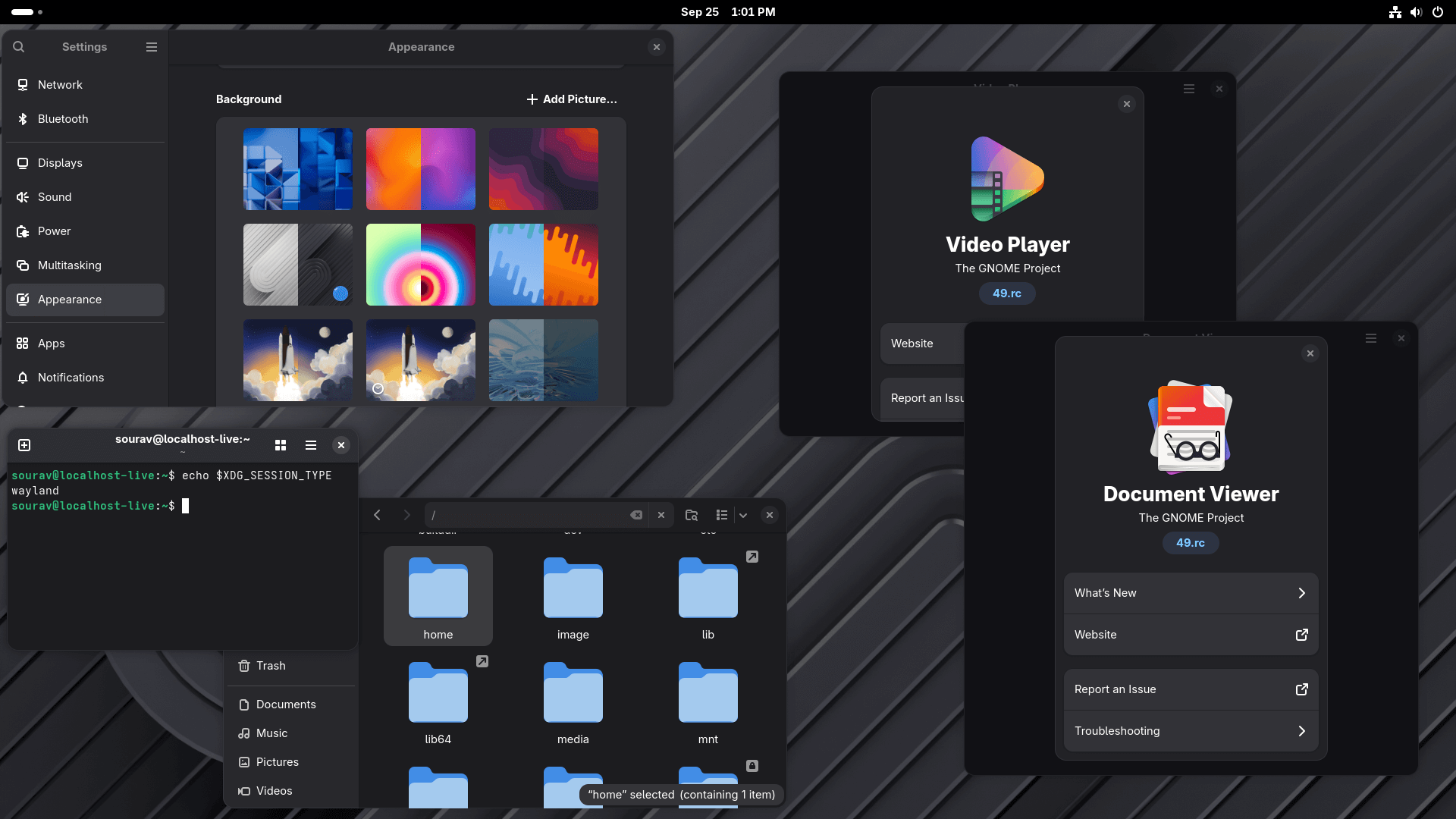
For the Workstation edition, Fedora 43 makes a bold move. It completely removes the GNOME X11 packages from the repositories, and all users will be migrated to the GNOME Wayland session.
Fear not, the change only affects the Workstation edition with GNOME. Other desktop environments and spins will continue to support X11 where needed, and legacy X11 applications remain supported through the XWayland compatibility layer.
Paired with that is GNOME 49, which brings three new default apps, a redesigned search popover for Nautilus (Files), a bunch of neat new wallpapers, media controls on the lock screen, and a donation prompt that appears a few times a year.
You should go through our detailed coverage to learn more:

4. Inclusion of RPM 6.0

Fedora 43 updates RPM to version 6.0, bringing significant security improvements to the package management foundation. The major focus is increased security with OpenPGP keys now referred to by fingerprint instead of short key IDs. This makes package verification more reliable and secure.
It also introduces support for multiple signatures per package and OpenPGP v6 keys, including post-quantum cryptography support. Plus, RPM 6.0 can use Sequoia-sq as an alternative to GnuPG for signing operations.
Note that while RPM 6.0 supports the new v6 package format, Fedora 43 continues using the v4 format by default. The new package format will come in future releases after testing.
5. Major Toolchain Upgrades
This release also brings significant updates to the development toolchain, giving developers access to the latest compiler optimizations and debugging tools.
The GNU Toolchain is upgraded to GCC 15.2, Binutils 2.45, glibc 2.42, and GDB 17.1. Python sees an update to version 3.14, its newest major release, while LLVM advances to version 21, incorporating the latest improvements in compiler technology.
6. Support for Hare
Fedora 43 adds support for the Hare programming language, a lightweight systems language aimed at simplicity and performance. Developers can now experiment with Hare without installing additional packages.
While Hare is niche compared to C or Rust, its focus on low-level programming and minimal runtime should make it appealing for certain systems development tasks.
7. Linux Kernel 6.17
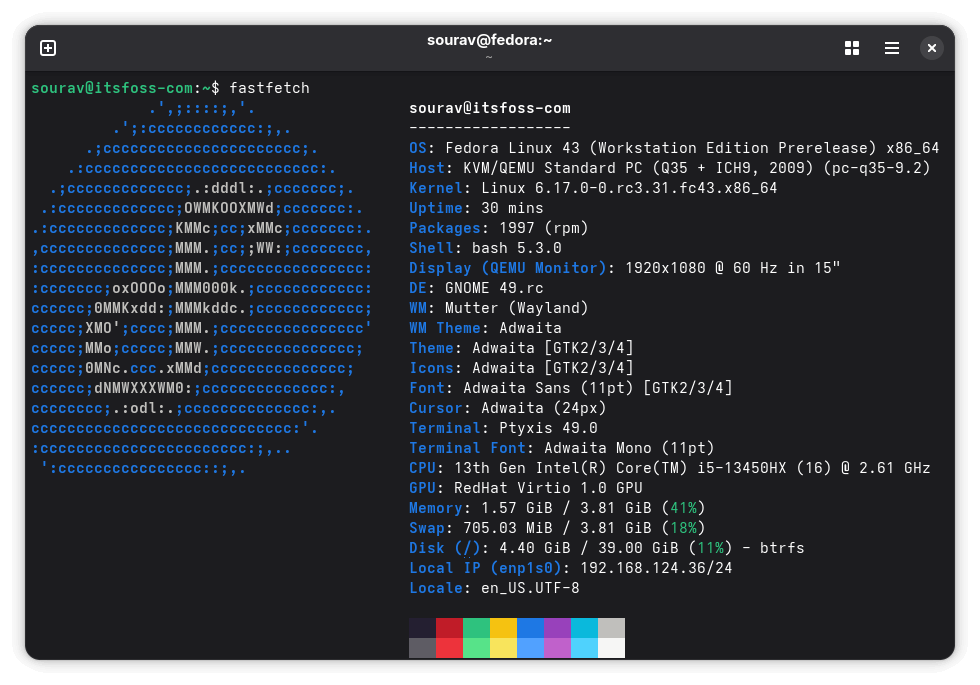
Fedora 43 comes with Linux kernel 6.17, bringing updated hardware support and performance improvements. While it isn’t a long-term support release, it ensures users get the latest features and fixes, making the system more responsive on modern hardware.
AMD systems benefit from smarter workload distribution on Ryzen processors thanks to the new Hardware Feedback Interface (HFI). Hybrid laptops see improved battery efficiency and graphics handling with SmartMux support, while virtualization is safer and more stable due to CPUID faulting.
Intel machines get better multi-core scheduling for smoother multitasking, along with enhanced webcam support through the IPU7 driver. Memory stability is improved with updated error detection tools, and GPU virtualization is more robust with SR-IOV support for select Intel graphics cards.
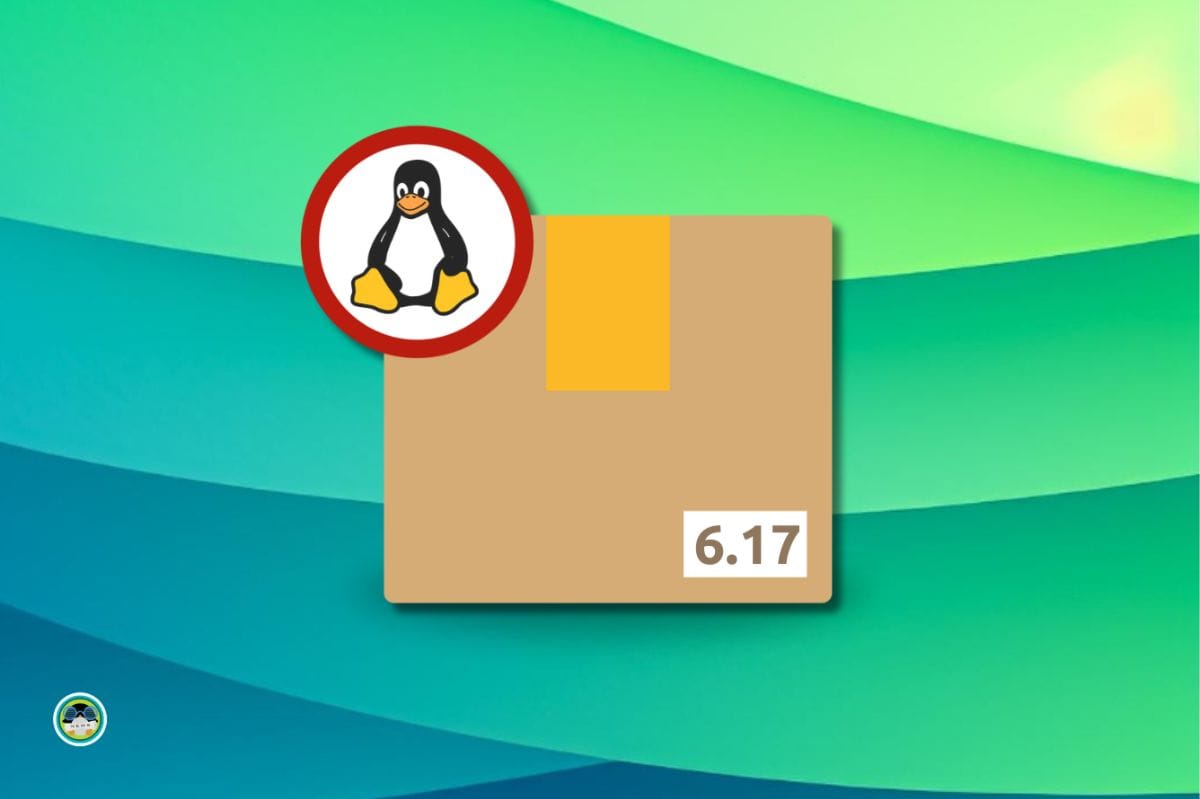
📥 Get Fedora 43
The Fedora 43 release is now available on the official website. Just keep in mind there may be some bugs or issues, so be sure to report them to the developers.
While there were some delays, the release is finally ready for you to check out!




